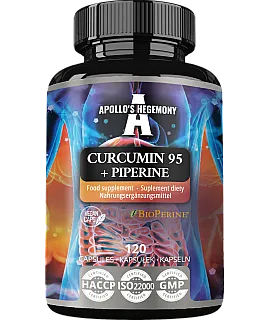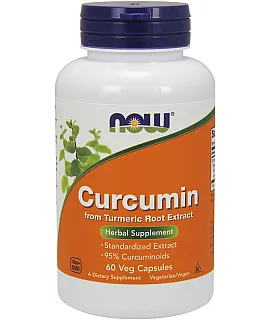Curcumin - what is it and what properties does it have?
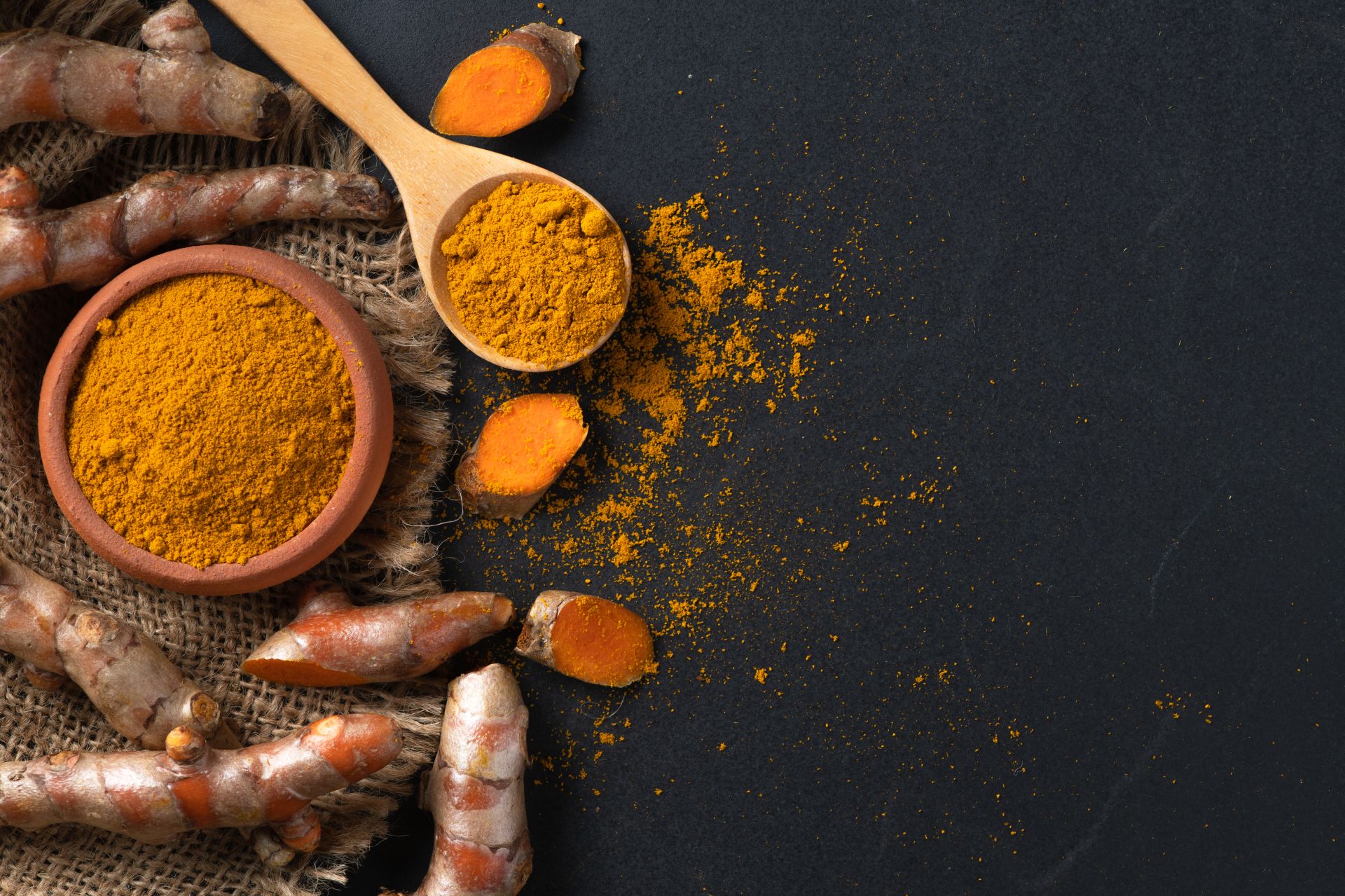
I'm sure you're familiar with turmeric. It is an intense yellow spice without which Indian cuisine is practically non-existent. In addition to its intense color and distinctive aroma, it offers something else. It hides a unique polyphenol: curcumin. It is this that has attracted worldwide attention due to its numerous health benefits documented in studies, which seem to work primarily through antioxidant and anti-inflammatory mechanisms. What other properties does curcumin have? In this article we will analyze it, its possible benefits and methods for its effective supplementation. Read to the end!
- Curcumin - what is it?
- Turmeric vs. curcumin - what are the differences?
- Curcumin's effects on humans
- Problematic bioavailability of curcumin
- Curcumin is worth using with piperine
- Side effects of curcumin - is it safe
- Are there contraindications to the use of curcumin?
- Summary
Curcumin - what is it?
Curcumin, the main component of turmeric, is a substance with powerful health properties that has been used for centuries in Ayurvedic and Chinese traditions. This yellow pigment, which gives the spice its characteristic color, not only sensationally enriches dishes, but can also soothe many health ailments.
Turmeric(Curcuma longa L.) is a plant of the ginger family that is mainly found in South and Southeast Asia. Curcuminoids, led by curcumin, are responsible for most of the health benefits attributed to it. Sometimes the name "curcumin" includes all 3 main curcuminoids, viz:
- diferuloylmethane (the one proper curcumin) - about 77% share,
- demethoxycurcumin - 17%,
- bisdemethoxycurcumin - 6%.
Curcumin was first isolated in 1815. Instead, its chemical structure was described in 1910 by Polish scientists. The health-promoting properties of this spice have been known and used by people for thousands of years - the history of turmeric use in Ayurveda dates back as far as 5,000 years.
According to the scientific literature, curcumin can help control inflammation and oxidative stress, metabolic syndrome, arthritis, anxiety and hyperlipidemia, among others.
There are also reports of helping to control inflammation and exercise-induced muscle soreness, which could improve recovery and performance in active individuals.
There are many ingredients in nature that are easy to associate with a specific health goal for which to use it. This is not the case with curcumin. It has such a universal effect that scientists have analyzed its effects on dozens of different health conditions in their studies. Most of the effects are due to its strong anti-inflammatory and antioxidant potential. This makes this polyphenol an exceptionally popular choice for general preventive health care.
Turmeric vs. curcumin - what are the differences?
Some people, learning about the extensive health benefits that curcumin can bring, immediately rush to a nearby discount store, buy a few sachets of turmeric and start sprinkling it by the teaspoonfuls into dishes. And great, because the spice itself is very healthy and is as desirable as possible in the diet, but in this way we will not reproduce all the benefits that scientists have noted with curcumin.
Why? This is because curcumin is only one of the components of turmeric, which naturally occurs in low concentrations, usually 0.5-5%. Unfortunately, we are not able to eat enough turmeric on a regular basis to provide the amount of curcumin that actually affects specific effects, but only for possible generalized prevention.
Curcumin's effects on humans
Medical databases abound with information about curcumin. In terms of the number of scientific publications on it, it is one of the leaders among the polyphenols contained in foods.
Scientists note curcumin's health-promoting potential in these problems:
- metabolic syndrome,
- hyperlipidemia,
- arthritis,
- psoriasis,
- inflammatory bowel diseases,
- anxiety and mood disorders,
- cardiovascular diseases.
In supporting human health, this ingredient has a very long history. In Ayurveda and Traditional Chinese Medicine, its use in health-promoting concoctions dates back thousands of years.
There are huge amounts of preclinical research results involving turmeric and curcuminoids in medical databases. These reports are gradually being verified in clinical trials, both on patients with diseases and on people without any diagnoses. At present, we already have many conclusions, but there are also many future prospects for conducting further studies.

Problematic bioavailability of curcumin
From current scientific reports, it can be concluded that curcumin can have great properties... as long as the body assimilates it well. This polyphenol is extremely problematic in terms of its pharmacokinetic profile. This is due to a number of factors, including the low concentration of the free substance in serum after ingestion, limited distribution in tissues, short half-life and rapid metabolism and excretion. Most curcumin is rapidly metabolized (via glucuronidation and sulfation) in the liver and intestines, leaving only a small amount detectable in tissues.
In rodent studies, the problem is not so great, because researchers have various methods of administration, such as intraperitoneal injections, which humans in ordinary supplementation do not use. For oral use, it is necessary to take curcumin either in a modified form that increases resistance to premature metabolism and improves its bioavailability, or in the company of other substances that create a friendlier environment in the digestive tract. You will learn the optimal way to maximize the effects in the next paragraph.
Curcumin is worth using with piperine
Piperine is the main active ingredient of black pepper. Also it is an interesting substance in terms of biological action, but in this case its function is typically assistive. Namely, taking curcumin simultaneously with piperine gets rid of the problem of poor bioavailability. The addition of piperine increases the bioavailability of curcumin by up to 2000%!
Curcumin is a lipophilic compound, and its lipophilicity plays a key role in its absorption, distribution, metabolism and elimination. Lipophilicity and low molecular weight make it a good substrate for P-glycoprotein. P-glycoprotein which can significantly reduce the rate of absorption of the substance.
The advantage of curcumin complex with piperine is due to the fact that piperine is a natural but effective inhibitor of P-glycoprotein, thus widening one of the narrowest throats in terms of curcumin bioavailability.
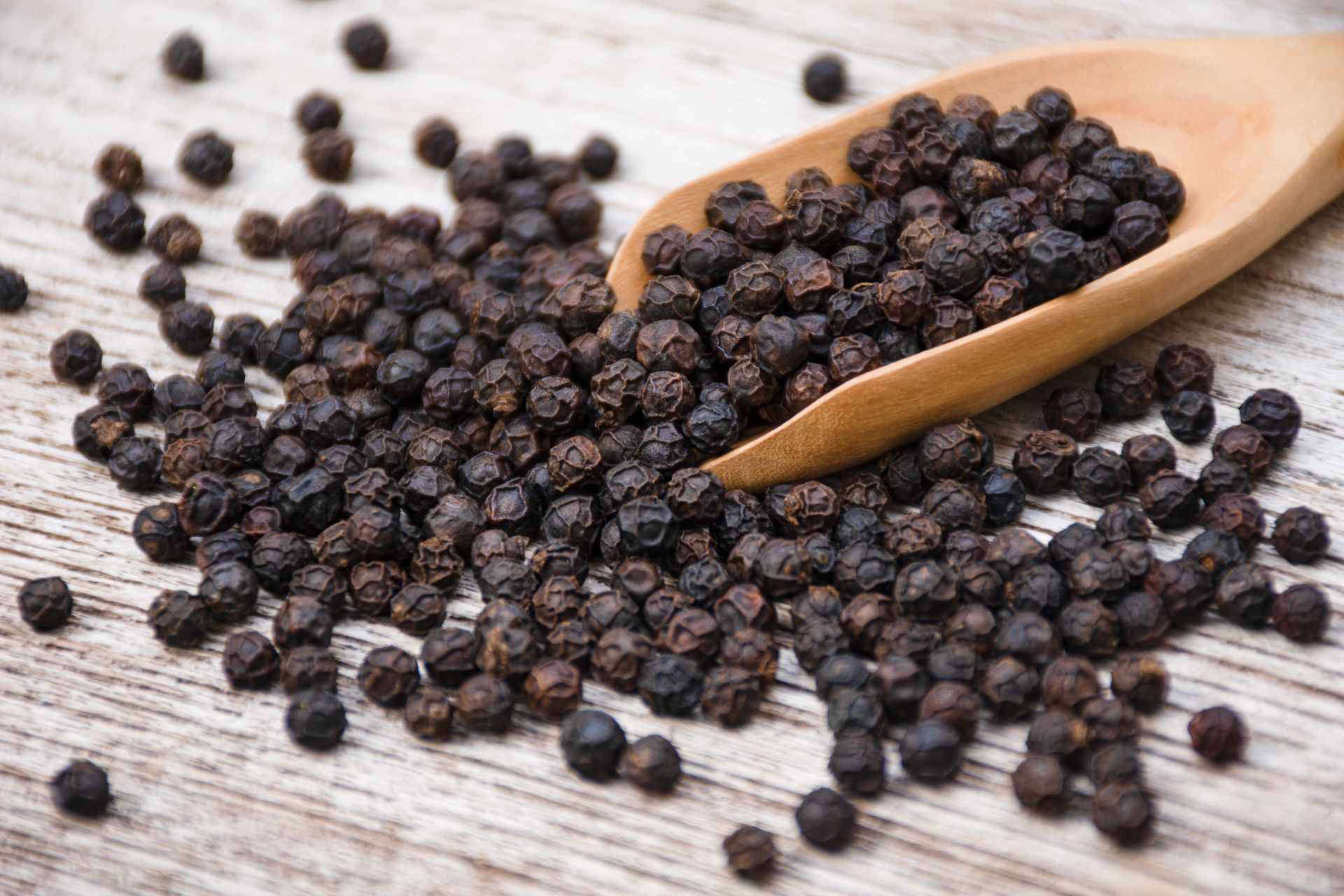
Side effects of curcumin - is it safe
Curcumin has a long history of use and a lot of information is known about its safety. According to reports by JECFA(The Joint United Nations and World Health Organization Expert Committee on Food Additives) and EFSA(European Food Safety Authority), the value of acceptable daily intake of curcumin is up to 3 mg per kilogram of body weight. This is a fairly low dose compared to what is used in clinical trials, but it is the official position of the authorities, who are generally far from cautious.
The U.S. FDA(Food and Drug Administration), on the other hand, has approved curcuminoids as "GRAS"(Generally Recognized As Safe) due to the finding of good tolerability and safety profile in clinical trialsatdoses of 4 to 8 grams per day.
Several studies on healthy volunteers have confirmed not only its efficacy, but also its safety. Despite this well-established safety, side effects can always happen. Again, some negative effects have been noted very occasionally. In one study, seven patients receiving doses in the 500-12,000 mg range and observed for 72 hours experienced diarrhea, headache, rash and yellow stool. In another study, some patients receiving curcumin in doses ranging from 450 to 3,600 mg daily for one to four months reported nausea and diarrhea, as well as increased serum alkaline phosphatase and lactate dehydrogenase levels.
Are there contraindications to the use of curcumin?
A contraindication to the use of curcumin is an allergy to plants of the ginger family(Zingiberaceae).
As for pregnancy and breastfeeding, it was historically considered safe when used as a spice. However, it has now been shown to cause uterine stimulation. Although consumption does not affect fetal development, the use of turmeric during pregnancy and breastfeeding is not recommended, and caution should be exercised due to the lack of clinical studies.
If surgery is planned, curcumin should be discontinued due to its effect on blood clotting.
Curcumin should be used with caution in people with diabetes, hypoglycemia or treated with blood glucose-lowering drugs.
In addition, curcumin may stimulate gallbladder contractions and cause the development of gallstones. Although there are no human studies, it is not recommended for use in patients with gallstones or bile duct obstruction.
It is worth noting that if piperine is also used with curcumin, various types of erosions in the stomach, esophagus, etc. may be contraindicated. In such cases, however, it is possible to focus on other strategies to increase bioavailability , instead of a complex with piperine by choosing, for example, liposomal curcumin or in phytosome form.
Summary
Curcumin is one of the most versatile and best studied polyphenols. It is intriguing both because of its multitude of health properties and its unavailability through problems with curcumin absorption in the digestive system and its rapid metabolism. Fortunately, scientists have already discovered several methods of increasing the effectiveness of supplementation with this ingredient by modifying its form, conjugating it with other molecules or using it together with substances that increase bioavailability, particularly piperine from black pepper. We now see great potential in it as part of general preventive health care, with it being safe even in large doses of several grams per day.
Sources:
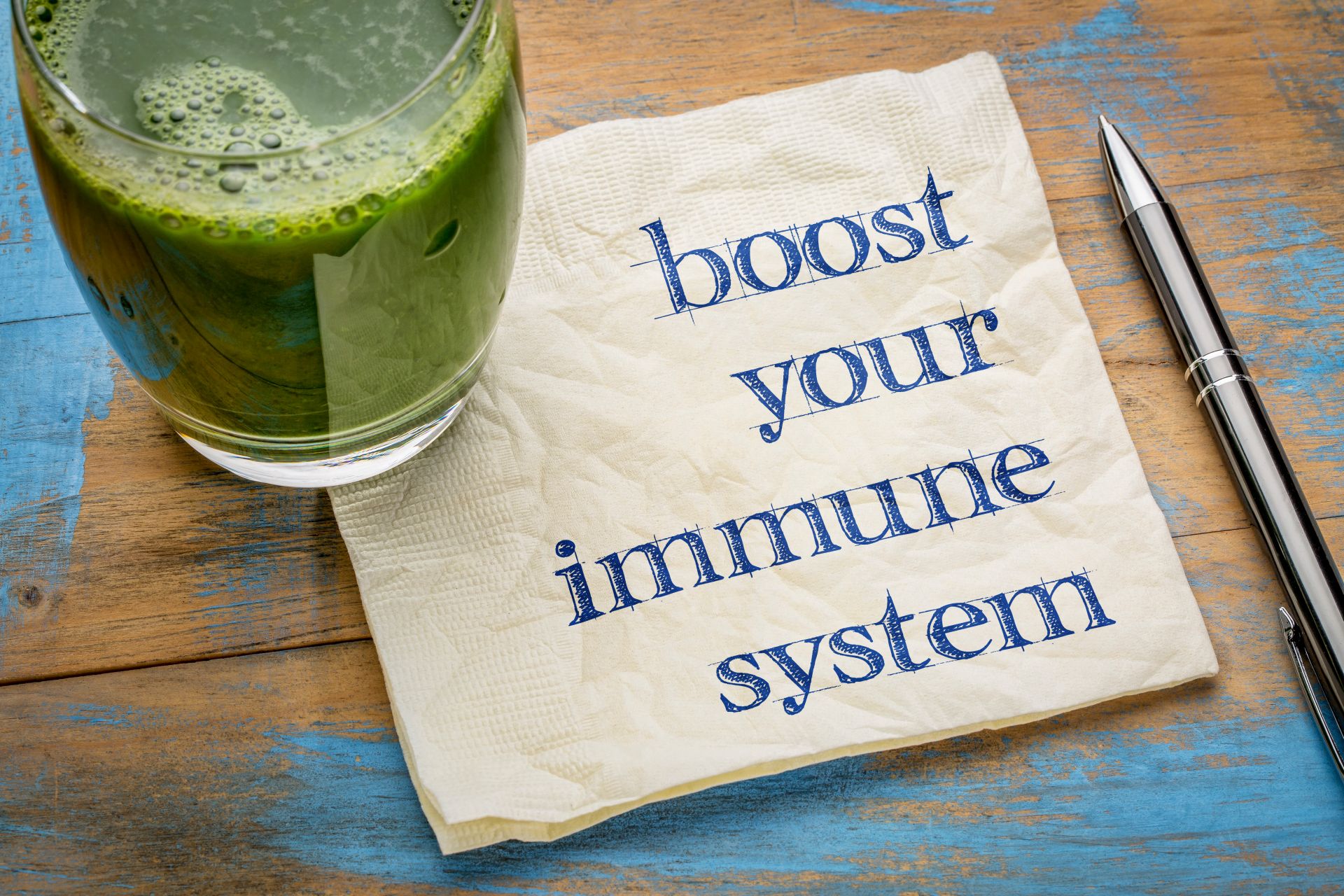 ⮜ Previous article
⮜ Previous article
Adaptogens and the immune system - what are the relationships?
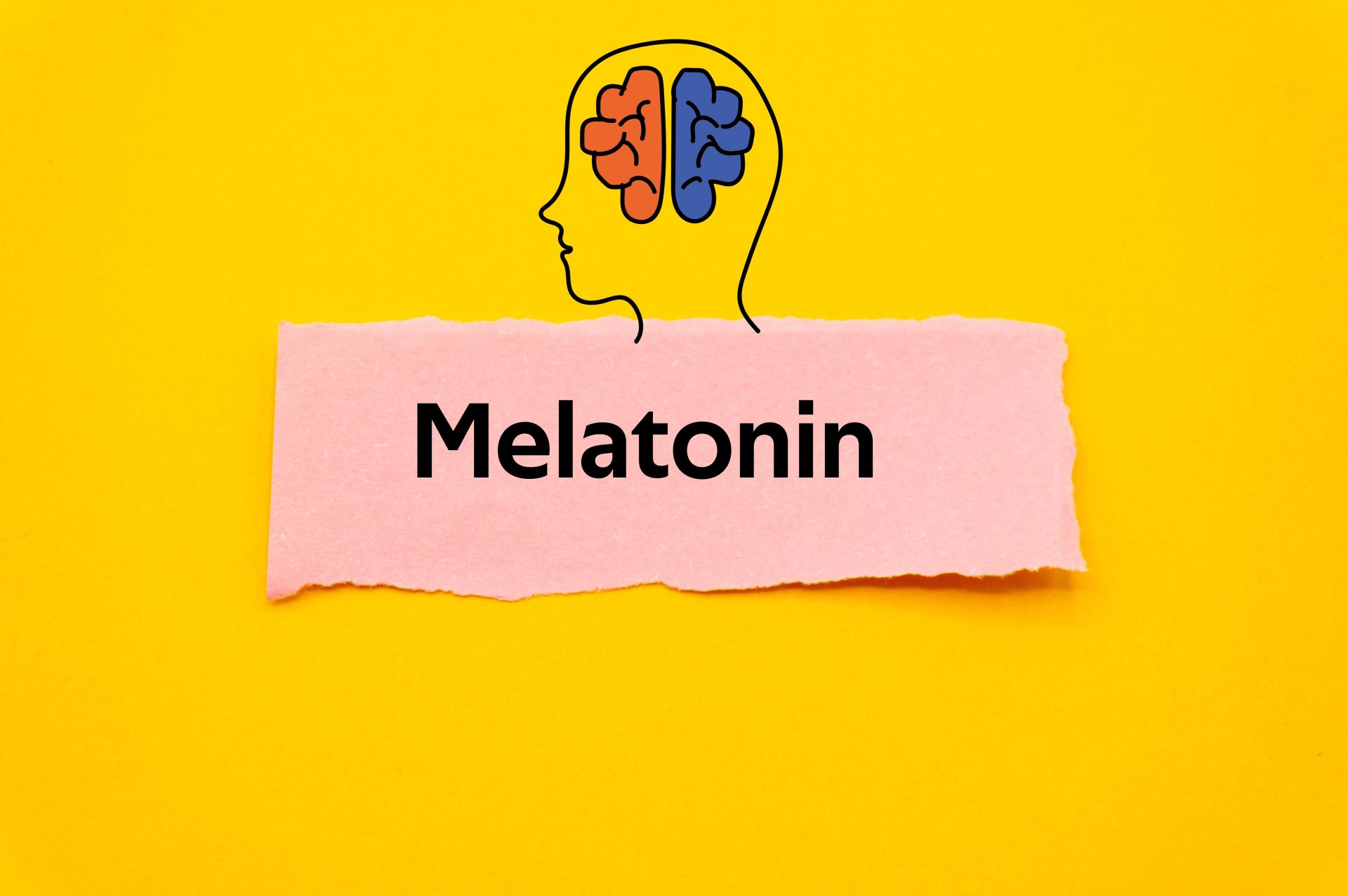 Next article ⮞
Next article ⮞
